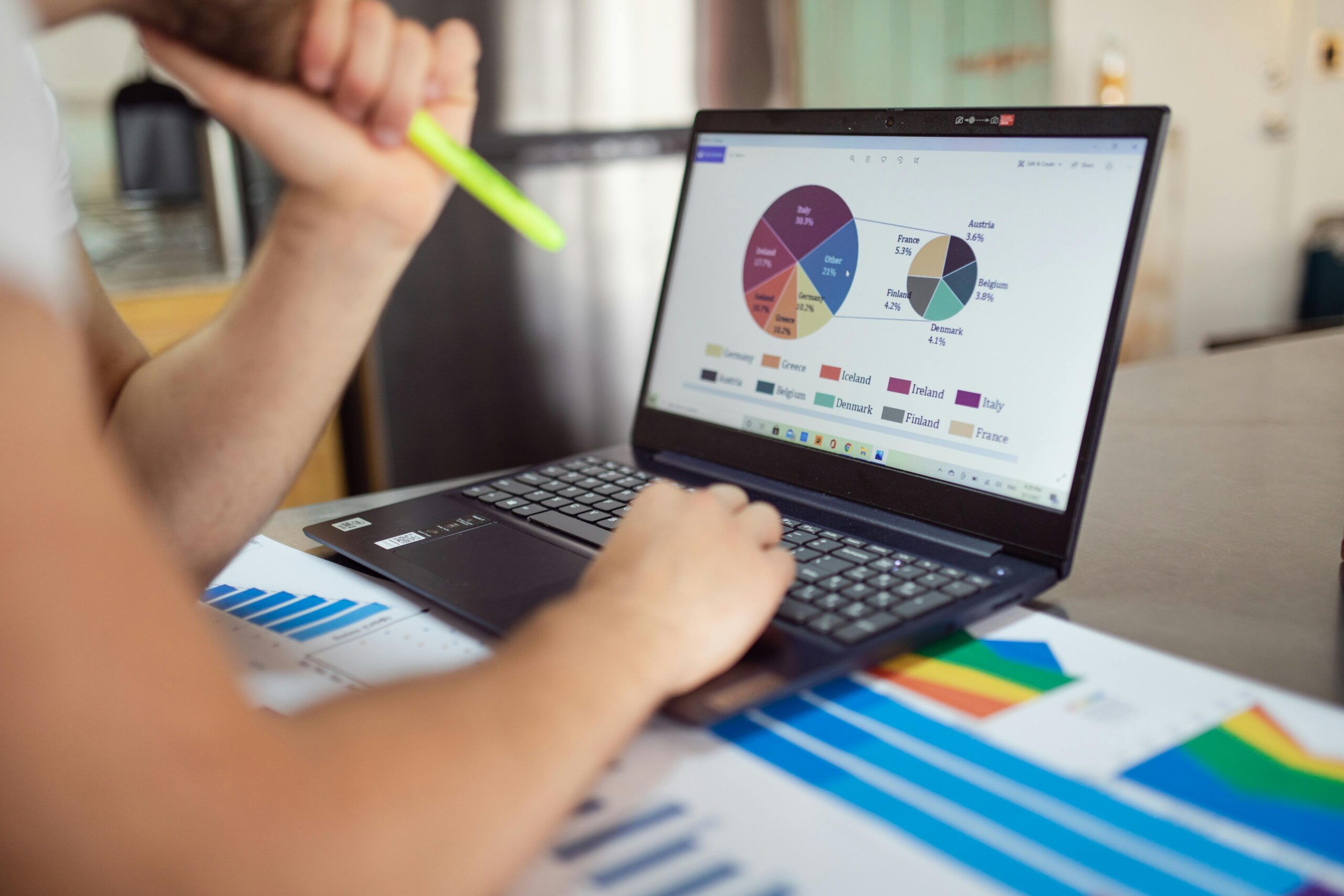Digital twin technology is transforming the landscape of biology and medicine, offering unprecedented opportunities for personalized healthcare, drug discovery, and groundbreaking research innovations.
🧬 Understanding Digital Twins in Biological Context
The concept of digital twins has evolved far beyond its industrial origins. In biological sciences, a digital twin represents a virtual replica of a living organism, organ system, or even cellular processes. These sophisticated computational models integrate real-time data from various sources to mirror the biological state and behavior of their physical counterparts with remarkable accuracy.
Digital twin models in biology leverage artificial intelligence, machine learning algorithms, and vast datasets to create dynamic simulations. Unlike traditional static models, these virtual representations continuously update themselves based on incoming data, allowing researchers and clinicians to monitor, predict, and intervene in biological processes with unprecedented precision.
The integration of genomic data, metabolic profiles, imaging results, and environmental factors creates a comprehensive digital representation that can simulate how an individual’s body might respond to diseases, treatments, or lifestyle changes. This holistic approach marks a paradigm shift from one-size-fits-all medicine to truly personalized healthcare strategies.
The Foundation: How Biological Digital Twins Actually Work
Creating a biological digital twin requires multiple layers of data integration and computational modeling. The process begins with collecting baseline biological data from an individual, including genetic sequences, proteomic information, metabolic markers, and physiological measurements. This information forms the structural foundation of the digital representation.
Advanced imaging technologies such as MRI, CT scans, and molecular imaging provide anatomical and functional details that enhance model accuracy. Wearable devices and continuous monitoring systems contribute real-time data streams, enabling the digital twin to reflect current physiological states rather than static snapshots.
Machine learning algorithms process this multidimensional data to identify patterns, predict outcomes, and simulate various scenarios. The computational models incorporate known biological pathways, disease mechanisms, and drug interactions, creating a predictive framework that can anticipate how biological systems will respond to different stimuli or interventions.
Key Components of Effective Biological Digital Twins
- Multi-omics data integration (genomics, proteomics, metabolomics)
- Real-time physiological monitoring and feedback loops
- Advanced computational modeling and simulation capabilities
- Machine learning algorithms for pattern recognition and prediction
- Visualization tools for intuitive interpretation of complex data
- Secure data infrastructure ensuring privacy and regulatory compliance
🎯 Precision Medicine: The Primary Frontier
Precision medicine represents the most promising application of digital twin technology in healthcare. By creating individualized models, physicians can predict how specific patients will respond to various treatment options before administering them. This predictive capability minimizes trial-and-error approaches that have historically characterized medical treatment.
In oncology, digital twins are revolutionizing cancer treatment strategies. By modeling tumor growth patterns, genetic mutations, and microenvironmental factors, oncologists can simulate how different chemotherapy regimens, immunotherapies, or radiation protocols might affect individual patients. This approach significantly reduces exposure to ineffective treatments while maximizing therapeutic outcomes.
Cardiovascular medicine has embraced digital twin technology to model heart function, blood flow dynamics, and disease progression. Cardiologists can now simulate surgical interventions virtually, optimizing procedural approaches before entering the operating room. These models help identify patients at high risk for adverse events and enable preventive interventions tailored to individual risk profiles.
Transforming Chronic Disease Management
Chronic conditions like diabetes, hypertension, and autoimmune diseases require ongoing management strategies that adapt to changing patient conditions. Digital twins provide continuous monitoring frameworks that detect subtle changes in disease trajectories before clinical symptoms emerge. This early detection capability enables proactive adjustments to treatment plans, preventing complications and improving long-term outcomes.
For diabetes management, digital twins integrate continuous glucose monitoring data, dietary patterns, physical activity levels, and medication adherence to create personalized insulin dosing recommendations. The models learn from individual responses over time, continuously refining their predictions to optimize glycemic control while minimizing hypoglycemic events.
Accelerating Drug Discovery and Development 💊
The pharmaceutical industry faces enormous challenges in bringing new medications to market. Traditional drug development processes take over a decade and cost billions of dollars, with high failure rates. Digital twin technology is transforming this landscape by enabling virtual clinical trials and predictive toxicology assessments.
Researchers can now test thousands of drug candidates against digital twin populations representing diverse genetic backgrounds, disease states, and co-morbidities. This virtual screening dramatically reduces the number of compounds requiring physical testing, accelerating timelines and reducing development costs. The technology identifies potential safety concerns and efficacy issues earlier in the development process, preventing costly late-stage failures.
Population-level digital twins aggregate data from thousands of individuals to simulate how drugs might perform across diverse patient groups. These models account for genetic variations, environmental factors, and lifestyle differences that influence drug metabolism and response. Pharmaceutical companies can identify patient subgroups most likely to benefit from specific therapies, enabling more focused clinical trial designs and targeted market strategies.
Personalized Pharmacology: The Right Drug at the Right Dose
Individual digital twins enable pharmacogenomic predictions that optimize drug selection and dosing for specific patients. Genetic variations in drug-metabolizing enzymes significantly affect how individuals process medications. Digital twin models incorporate pharmacokinetic and pharmacodynamic data to predict optimal dosing regimens that maximize therapeutic benefits while minimizing adverse effects.
This personalized approach proves particularly valuable for medications with narrow therapeutic windows, where small dosing variations can mean the difference between ineffectiveness and toxicity. Anticoagulants, immunosuppressants, and chemotherapy agents all benefit from this precision dosing strategy, improving patient outcomes while reducing healthcare costs associated with adverse drug reactions.
🔬 Research Applications Beyond Clinical Medicine
Digital twin technology extends far beyond clinical applications, revolutionizing fundamental biological research. Systems biology researchers use these models to understand complex interactions within cellular networks, metabolic pathways, and signaling cascades. The ability to simulate perturbations and observe cascading effects provides insights impossible to obtain through traditional experimental approaches alone.
Microbiome research benefits tremendously from digital twin modeling. The human microbiome contains trillions of microorganisms whose collective activities profoundly influence health and disease. Digital twins of microbiome ecosystems enable researchers to predict how dietary changes, antibiotic exposures, or probiotic interventions might shift microbial communities and affect host physiology.
Developmental biology researchers employ digital twins to model embryonic development, organogenesis, and cellular differentiation processes. These models help identify critical developmental windows and environmental factors that influence birth outcomes. Understanding these processes has implications for preventing developmental disorders and optimizing maternal health strategies.
Advancing Regenerative Medicine and Tissue Engineering
Regenerative medicine aims to repair or replace damaged tissues and organs. Digital twins accelerate this field by modeling tissue growth dynamics, cellular differentiation pathways, and biomaterial interactions. Researchers can simulate how stem cells might respond to different growth factors or mechanical stimuli, optimizing protocols for generating functional tissues in vitro.
Organ-on-chip technologies combined with digital twin models create powerful platforms for studying organ-specific physiology and disease mechanisms. These miniaturized organ systems replicate key functional features of human organs while remaining amenable to high-throughput screening and real-time monitoring. The digital twin layer adds predictive capabilities, extending experimental observations to broader contexts and longer timeframes.
Technical Challenges and Future Directions 🚀
Despite tremendous promise, biological digital twin technology faces significant technical challenges. Data integration remains complex, as biological information comes in diverse formats from multiple sources with varying quality standards. Developing robust frameworks for harmonizing multi-modal data while preserving biological relevance requires ongoing methodological innovations.
Computational demands present another hurdle. Accurate biological modeling requires immense processing power, particularly when simulating molecular-level interactions across organ systems. Cloud computing infrastructure and specialized hardware like quantum computers may eventually address these limitations, but current computational constraints still restrict model complexity and real-time responsiveness.
Model validation represents a critical challenge. Unlike engineering applications where physical twins can be directly compared to digital versions, biological systems exhibit inherent variability and measurement uncertainties. Establishing confidence in model predictions requires extensive validation against clinical outcomes and experimental data, a process that takes time and resources.
Ethical Considerations and Data Privacy
The creation of comprehensive biological digital twins raises important ethical questions. Who owns an individual’s digital twin? How should this information be protected? What happens if predictions reveal predispositions to diseases for which no treatments exist? These questions require thoughtful policy frameworks balancing innovation with individual rights and societal values.
Data security becomes paramount when dealing with such intimate biological information. Breaches could expose individuals to discrimination, privacy violations, or unauthorized exploitation of their biological data. Robust encryption, access controls, and governance frameworks must evolve alongside the technology to maintain public trust and ensure responsible implementation.
The Economic Impact: Healthcare Transformation 💰
Digital twin technology promises substantial economic benefits for healthcare systems worldwide. By preventing disease complications, optimizing treatment selections, and reducing adverse drug reactions, these models could save billions in healthcare expenditures. Early economic analyses suggest that widespread adoption could reduce overall healthcare costs while simultaneously improving patient outcomes—a rare win-win scenario.
The technology also creates new economic opportunities. Biotechnology companies specializing in digital twin platforms, data analytics firms managing biological databases, and consulting services helping healthcare organizations implement these systems represent growing market segments. The digital health economy continues expanding as precision medicine becomes mainstream.
Insurance models may evolve to incorporate digital twin predictions, potentially offering incentives for individuals who maintain healthy digital twin profiles through lifestyle modifications. This shift from reactive sick care to proactive health management could fundamentally restructure healthcare financing and delivery models.
Integration with Emerging Technologies 🌐
Digital twin technology doesn’t exist in isolation. Its true power emerges through integration with other cutting-edge innovations. Artificial intelligence and machine learning continuously enhance model accuracy and predictive capabilities. As algorithms improve and training datasets expand, digital twins become increasingly sophisticated and reliable.
Internet of Things devices and wearable sensors provide continuous data streams that keep digital twins updated with real-time physiological information. Smart devices monitor everything from heart rhythms to sleep patterns, feeding this information into computational models that track health trajectories and detect early warning signs of deterioration.
Blockchain technology offers solutions for secure, decentralized management of biological data. Distributed ledger systems could enable individuals to maintain control over their digital twin information while selectively granting access to healthcare providers, researchers, or pharmaceutical companies. This approach balances data utility with privacy protection and individual autonomy.
🏥 Implementing Digital Twins in Clinical Practice
Translating digital twin technology from research laboratories to clinical practice requires addressing practical implementation challenges. Healthcare systems must invest in computational infrastructure, train personnel in new technologies, and integrate digital twin insights into existing clinical workflows. Early adopter institutions are developing best practices that will guide broader implementation efforts.
Regulatory agencies worldwide are grappling with how to evaluate and approve digital twin applications for clinical use. Traditional regulatory frameworks designed for drugs and medical devices don’t perfectly map onto adaptive computational models that evolve over time. New regulatory paradigms must ensure patient safety while fostering innovation and not stifling technological advancement.
Physician education represents another implementation consideration. Medical professionals must understand digital twin capabilities, limitations, and appropriate use cases to effectively incorporate these tools into patient care. Medical school curricula and continuing education programs are beginning to address computational medicine and precision health topics, preparing the next generation of clinicians for this transformed landscape.

The Road Ahead: Realizing the Full Potential
Digital twin technology in biology stands at an inflection point. The foundational science, computational capabilities, and data infrastructure necessary for widespread implementation are rapidly maturing. The next decade will likely witness dramatic acceleration in adoption across research institutions, pharmaceutical companies, and healthcare systems globally.
Success requires sustained collaboration among diverse stakeholders including researchers, clinicians, patients, technology developers, policymakers, and ethicists. Multi-disciplinary approaches that bridge computational sciences, biological research, clinical medicine, and social sciences will drive innovation while ensuring responsible, equitable implementation.
As digital twin models become more sophisticated and validated through real-world applications, they will increasingly inform not just individual patient care but also population health strategies, public health policies, and our fundamental understanding of biological systems. This technology represents more than incremental improvement—it signals a transformation in how humanity approaches health, disease, and the mysteries of biology itself.
The revolution is underway, and its impact will ripple through medicine and biology for generations to come. By embracing digital twin technology while thoughtfully addressing its challenges, we stand poised to unlock unprecedented capabilities for healing, discovery, and human flourishing. The future of precision medicine isn’t just approaching—it’s already beginning to reshape the present, one digital twin at a time.
Toni Santos is a deep-biology researcher and conscious-evolution writer exploring how genes, microbes and synthetic life inform the future of awareness and adaptation. Through his investigations into bioinformatics, microbiome intelligence and engineered living systems, Toni examines how life itself becomes a field of awakening, design and possibility. Passionate about consciousness in biology and the evolution of living systems, Toni focuses on how life’s architecture invites insight, coherence and transformation. His work highlights the convergence of science, philosophy and emergent life — guiding readers toward a deeper encounter with their living world. Blending genetics, systems biology and evolutionary philosophy, Toni writes about the future of living systems — helping readers understand how life evolves through awareness, integration and design. His work is a tribute to: The intertwining of biology, consciousness and evolution The emergence of microbial intelligence within and around us The vision of life as designed, adaptive and self-aware Whether you are a scientist, thinker or evolving being, Toni Santos invites you to explore the biology of tomorrow — one gene, one microbe, one awakening at a time.




